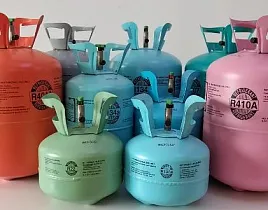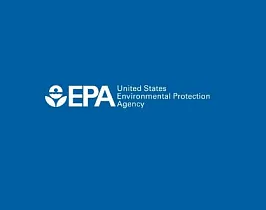
At a recent hearing on hydrofluorocarbons (HFCs), a broad set of stakeholders voiced support for the common sense climate leadership embodied in New York state’s proposed new regulations to reduce emissions of climate damaging HFCs. Supportive testimony came from manufacturers, end users, grassroots advocates, state residents, and environmental organizations.
HFCs are powerful, manmade greenhouse gases commonly used in cooling and refrigeration equipment. They have up to thousands of times the global warming power of carbon dioxide and leak out of systems to accelerate climate change.
New York’s Department of Environmental Conservation’s proposed action to curb these emissions under NY Part 494, is essential to meet the state’s mandated climate emission reduction targets. Without these actions, HFCs could represent almost 42% of New York’s 2050 emissions limits.
“These proposed HFC restrictions send a long-term signal needed to transition from HFCs to alternatives with ultra-low global warming potential (GWP) and allow time for industry to make that transition.” – Beth Porter, Environmental Investigation Agency US
The proposal embodies how New York is leading the way toward a transition to climate-friendly refrigerant alternatives and sets the stage for more ambitious nationwide restrictions on HFCs at the federal level.
“From a climate perspective it is clear that whenever we can go to near-zero-emission technologies, we should. For some sectors like commercial and industrial refrigeration this transition is already happening.” – Richie Kaur, Natural Resources Defense Council
Some opponents of the proposal have claimed it is overly ambitious and infeasible, misleadingly citing unrealistic dates for transitioning to alternatives. In reality, New York’s proposed timeline for transitioning to an ultra-low GWP limit of <10 in new equipment (compared to HFCs which have GWPs into the thousands) are for dates ranging from 2030 to 2034 for most sectors. This provides a very long lead time of up to a decade for businesses to plan their transition smoothly. The long-term market signal allows businesses to get ahead of the federal phasedown, which may also accelerate in the future.
“[The availability of natural refrigerant equipment] makes the requirement for under 10 GWP reasonable…We stand ready to work with end users in New York to provide cost-effective and energy-efficient ultra-low GWP solutions for businesses and consumers.” – Dave Malinauskas, CIMCO Refrigeration
The European Union has already finalized similar regulations with earlier effective dates than those in New York’s proposal, further underscoring the feasibility of these amendments. There are already successful uses of alternative refrigerants across the country, including in New York. The proposal sends the signal to manufacturers to scale up production of alternatives, which will bring down costs through economies of scale.
“There are several manufacturers in the U.S. who are ready to bring [ultra-low GWP space heating and cooling] units here. The Part 494 regulations would be an important spur and support to those manufacturers.” – Tom Kacandes, Inside Track Solar, Inc.
End-user companies, big and small, are already adopting these technologies in New York, including discount retailer ALDI, which serves many rural and disadvantaged communities in the state. EIA’s map of Climate-Friendly Supermarkets shows nearly 60 stores in New York are HFC-free and this is not even an exhaustive list.
For example, ALDI, the fastest-growing supermarket company in the U.S. which is delivering affordable products to consumers, has voluntarily committed to transition to ultra-low GWP refrigerants, setting a date of 2035 to replace all HFCs in their existing and new stores.
Another important benefit of the proposal is that ultra-low GWP equipment is already more energy-efficient than HFC-based refrigeration systems. EPA calculations predict that the full HFC phasedown will have a net benefit of up to $269.9 billion. If the costs are allocated to New York State based on population size, this would result in $288-540 million in savings.
New York-based grocer DeCicco & Sons, a small business with ten stores, has implemented transcritical CO2 systems, an ultra-low GWP, natural refrigerant, across several stores. In its first CO2 store, the business reported saving $74,000 in energy consumption over a twelve month period as a result of the transition.
“Our stores are 70% natural refrigerants so far…We have proved that you can have the systems be more efficient than the [HFC] refrigerants, we think it’s definitely the way of the future. Supermarkets that are being built should be built to that same standard going forward.” – John DeCicco, DeCicco & Sons Markets
The proposed regulation includes flexibility in the compliance timelines for small businesses in disadvantaged communities that are experiencing economic hardship. Given the timelines to repair equipment before a retrofit or replacement is mandated, and the ability of businesses to request a variance, the proposed mandates are reasonable while also allowing for flexibility to suit the needs of individual businesses.
The regulation doesn’t require any businesses or households to replace their existing refrigerators or air conditioners. It simply means that once equipment has reached the end of its useful life and it’s time to be replaced, it then will be replaced by a more climate-friendly one.
The state is also pairing the proposed regulations with incentives and funding to support businesses and communities in this transition through its Climate Smart Community grant program and demonstration programs.
The New York proposal also requires monitoring and repairing of refrigerant leaks from large commercial equipment through monthly inspections and the use of automatic leak detection systems. A refrigerant management program can help save businesses money on purchasing new refrigerants to replace those leaked, while also making a big impact on reducing emissions.
“[Proposed requirements on leak detection] would reduce annual leak rates by 10% or more. The effect for a system with 2,000lbs of R404A would be to cut 780,000lbs of CO2emissions annually and save $4,000 per year in refrigerant costs.” – Michael Helme, New Yorkers for Cool Refrigerant Management
Requirements for the prevention and repair of refrigerant leaks by commercial users such as supermarkets are a vital aspect of the proposal. The average supermarket system leaks 25% of its refrigerant annually, equivalent to 875 pounds or the emissions of 336 cars each year. Similar programs in other states, including California and Washington, have demonstrated saving businesses money through common sense refrigerant management.
The Environmental Investigation Agency (EIA) and 350NYC investigated refrigerant leaks at Gristedes, a supermarket chain in New York City. All of the Gristedes stores investigated were found to be leaking, most of which had refrigeration labeled with HFCs, and in two stores EIA found what appeared to be leaks of chlorofluorocarbon (CFC) or hydrochlorofluorocarbons (HCFC) refrigerants, potent climate warming and ozone depleting substances that have been phased out through regulations. This underscores the importance of consistent, storewide leak monitoring to address the full scale of this issue.
“Major action in the proposed regulation is tackling emissions from equipment used in commercial food and supermarkets. This is the largest single source of emissions making up one-quarter of all HFC emissions in the state.” – Dan Howells, Green America
The proposed regulation is essential to meet New York’s climate emissions reduction targets and to support its transition away from HFCs. There are widespread, successful uses of alternative refrigerants that protect the climate and ozone while offering enhanced energy efficiency. But to scale up these alternatives and cut emissions at the pace needed to fight the climate crisis, we need strong policies like NY Part 494 on HFCs.
For more details, please see EIA’s written comment for NY Part 494 on HFCs.




